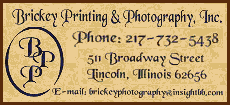|
 The tangible wallet-filler has long been a staple at conventions and cocktail parties, and experts say technology is expanding the function of the business card rather than hindering it. While Treos and BlackBerrys make exchanging contact information simpler than ever, some say there's nothing more personal than a card-in-hand. The tangible wallet-filler has long been a staple at conventions and cocktail parties, and experts say technology is expanding the function of the business card rather than hindering it. While Treos and BlackBerrys make exchanging contact information simpler than ever, some say there's nothing more personal than a card-in-hand.
Business card printing in the United States is a $1.2 billion industry, according to Gail Nickel-Kailing, an analyst with Business Strategies Etc.
In fact, there is such growing demand for business cards that Framingham-based Staples Inc. this month unveiled its "Business Cards in Minutes," allowing customers to design and print cards in as little as 30 minutes. The standard industry delivery time is three to seven business days.
Graphic designers say consumers are desperate to distinguish themselves with wildly colorful and multi-textured formats, from plastics to linens.

"No matter what you're selling, if it's a product or yourself, business cards are a form of advertising," said Sabatino Andreoni, a Montreal-based graphic designer. "Many people are ordering cards with just a Web site. People are going to type the domain if they really like the card. It then becomes a conduit to something more alive."
Information cards are an ancient tradition, dating back to 15th century China. What were then called visiting cards or calling cards were used to introduce the arrival of royalty, and were engraved with elaborate and detailed art.
Today, they are taking new forms, from simply printed to some carrying computer chips that can be plugged into a personal computer to download catalogs or company information.
While infrared business cards, transferred via personal digital assistants, have become increasingly popular, some say the 3 1/2-by-2-inch standards will always be a sign of prestige and good business etiquette.
"It is a symbol handed from one person to another," said Ganesan Shankaranarayanan, a professor of information systems at Boston University School of Management. "You're supposed to take the card and examine it for texture, color, look and feel. It would be impolite to just stick it in your pocket."
In China and Japan, people are expected to receive a business card with both hands, read it immediately and praise the card's qualities, Shankaranarayanan said. In Korea, every employee in a company has business cards, including janitors.
[to top of second column]

 |
 Dan Ariely, who teaches behavioral economics at the Massachusetts Institute of Technology, said business cards are necessary to remember who you've met and why they are important. It isn't likely an electronic message will serve the same purpose, he said.
"When people introduce themselves, they usually don't say what their title is," Ariely said. "When you are sitting with 10 people, you need a card to remember names and who you should be paying more attention to. This is especially true with globalization, as more people are traveling to other countries for business."
But business cards are no longer limited to white-collar businessmen, according to Rob Schlacter, Staples vice president. In Staples' Los Angeles stores especially, a large portion of the cards designed are "social cards" and "dating cards."
"Customers are creating cards for the nightclub dating scene, as a way to give vital statistics about themselves," Schlacter said. "We also had a high school student come in and make a MySpace card. Within a day or two, 40 other MySpace kids came in to do the same card."
When 18-year-old Josh Burke of Easthampton, Mass. meets girls, he can't stand scrambling for a pen and paper. So the aspiring comic book writer hands them his business card that includes his e-mail address, MySpace link and title: Visionary Genius.

"If you meet a girl, rather than being clumsy, you give them your card and try to act like you know what you're doing," he said. "It gives an impression."
Mlynek's cards certainly leave an impression. When he's not using ones with lenticular lens screens that show multiple images, he favors others that have computer chips carrying data for online catalogs and infomercials.
The cards cost him about $1.60 a piece, versus the standard black-and-white average cost of 4 cents per card, but Mlynek said the reaction he gets is priceless.
"The card is a novelty, and people will show it to others at a bar or a conference because it's neat," Mlynek said. "I'll talk to people I've done business with five years ago, and they'll tell me they still have my business card. You don't get that same effect with e-mail, because it's not personal and it doesn't last."
[Associated Press; by Erin Conroy]
Copyright 2007 The Associated Press. All rights reserved. This
material may not be published, broadcast, rewritten or
redistributed.
 |